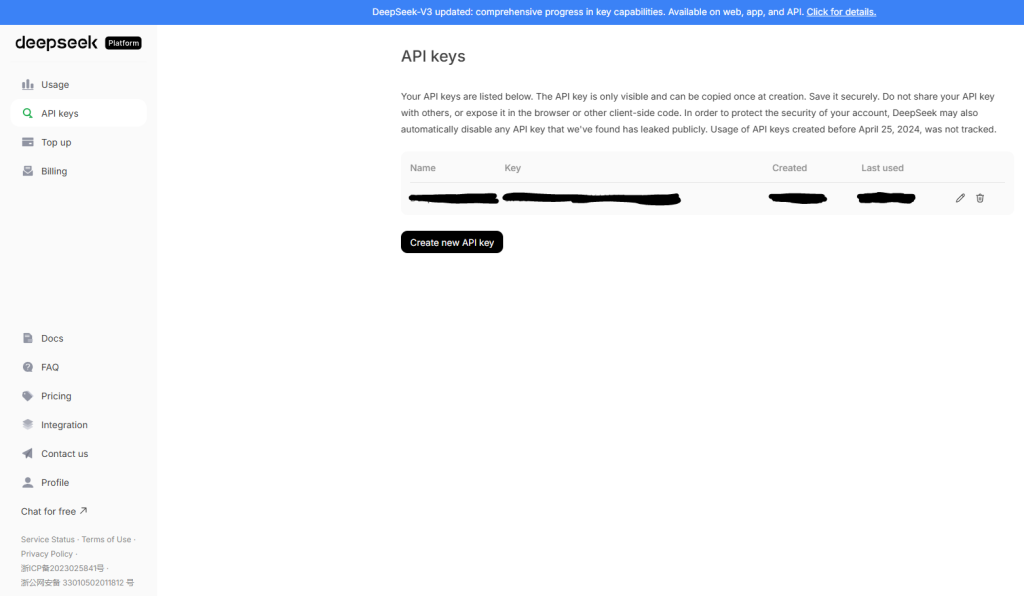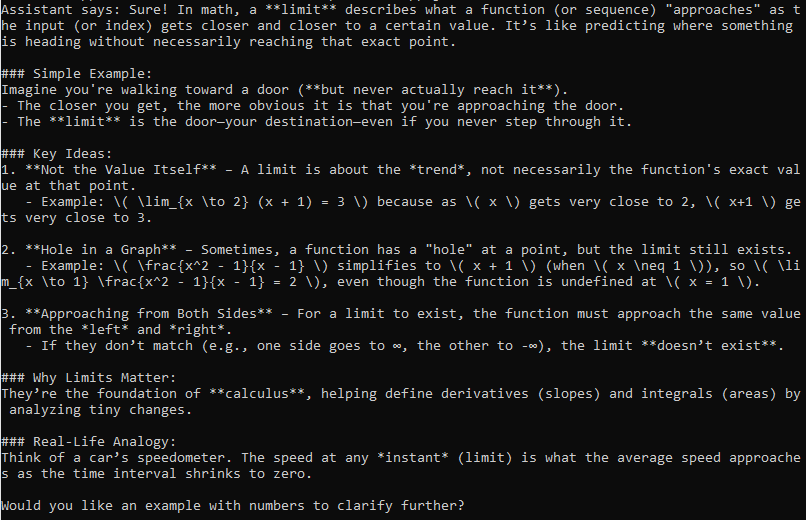Boost, Automate, and Scale: How to Build Websites with APIs Such as DeepSeek
 Idera Dev Tools
Idera Dev Tools
Building scalable websites with APIs (application programming interfaces) has become a necessity for modern businesses and developers. Through APIs, you can connect seamlessly with external or separate services, enable richer functionalities, and automate tasks behind the scenes.
Furthermore, you don’t always need to fully understand the inner workings of an API, especially external ones. Instead, you only have to determine the data that it needs, the functions that you’ll use, and how you will handle the result. Because of this, most, if not all, developers use some type of API in their workflow.
DeepSeek API integration is one of the most popular topics recently, mostly because of the results of its commendable benchmarks and cheaper costs. So, there’s a lot to gain from exploring how you can integrate DeepSeek APIs into your websites. Read on below to get started!
Why APIs Matter
Without APIs, modern platforms like e-commerce stores, social media sites, and SaaS solutions would struggle to offer dynamic and rich UX. Developers also suffer without APIs, prolonging and complicating development.
On the other hand, there are numerous benefits of API integration. These include faster feature rollouts, easier automation, and the ability to expand your website functionality without starting from scratch.
Effective API Integration Examples
To understand how APIs help developers, let’s explore some API integration examples across different industries:
Third-party services
These are usually subscription-based SaaS solutions that abstract complex functionalities into easy-to-use components and methods. For example, payment gateways like Stripe or PayPal enable developers to facilitate financial transactions without handling sensitive card data directly.
Social media logins like Google OAuth or Facebook are another example of these services. They secure and simplify user onboarding by letting users authenticate via existing (yet external) accounts.
Content aggregation
This refers to a type of API that pulls information from multiple sources (e.g., news feeds, product reviews) into a single unified view. For example, if you’re building a travel blog, you might need travel and hotel aggregation APIs from Booking.com, Skyscanner, or TripAdvisor. Plenty of content aggregation APIs exist for news, product listings, real estate, financial data (stocks), and other types of data.
By using APIs to aggregate data, you can offer fresh, up-to-date content without manual updates, driving user engagement, SEO performance, and operational efficiency.
Workflow automation
This type of API allows websites to automatically trigger actions or complete processes with minimal manual or human involvement. Zapier is one such tool, with APIs that connect over 5000+ apps (e.g., Gmail, Slack, Salesforce, Trello, etc.). For instance, it can automatically send a message to a company’s Slack marketing channel when a new lead fills in a free trial form.
Workflow automation APIs reduce manual and repetitive tasks, improve consistency and reliability, and lessen the load for developers. Understanding them is critical for automating tasks with DeepSeek API, which we’ll discuss in the following sections.
DeepSeek API Overview
DeepSeek lends its power to developers using the DeepSeek API. In this section, you’ll learn more about what it is, how it improves your workflow and website’s quality, and its core functionalities.
What is DeepSeek API?
DeepSeek’s API provides capabilities like NLP*, text generation, and data analytics. Designed to empower developers and improve the user experience, it allows you to integrate conversational AI into your web projects.
With the DeepSeek API, you can offer intelligent responses, content generation, and task automation without worrying about the technology or scalability.
*NLP (natural language processing) refers to a subset of AI which deals with allowing computers to understand, process, and construct human language using machine learning or deep learning. Speech recognition, natural language generation (e.g., chatbots), and translation are typical usages of NLP.
How DeepSeek Helps
Through DeepSeek, developers can build smarter websites and apps that communicate naturally with users. Whether it’s for answering customer inquiries, generating content, or automating workflows, its API significantly enhances functionality while saving development time.

This way, dev teams can focus on higher-level strategy and analysis instead of repetitive operations and complex programming. On the other hand, users have an easier time using your website or application.
Core Functionalities of DeepSeek
DeepSeek provides a rich set of features:
Conversational AI: Allows you to build websites with chatbots, virtual assistants, and helpdesk automation.
Content Generation: Allows your users to create articles, social media content, product descriptions, or even mathematical solutions.
Dynamic Data Interaction: Helps you retrieve or manipulate structured information (e.g., from databases) based on inputs and previous interactions. This is extremely helpful for business intelligence (BI*) or dashboard technologies.
These DeepSeek API features allow businesses, independent developers, and tech enthusiasts to refine their websites with interactive and dynamic experiences. Now that you have a good idea of DeepSeek’s API, it’s time to learn how you can integrate it.
*Business intelligence can refer to a process, system, or tool that uses data collection, data analysis and interpretation, data visualization, and more to help businesses make informed decisions. For instance, an organization can use a BI tool with a dashboard and real-time statistics and analyses for their strategies and operational decisions.
Choosing between DeepSeek and OpenAI
Both APIs offer powerful NLP capabilities and have almost the same features, but they cater to slightly different needs and priorities. Here are some key points to consider when choosing between these two popular AI APIs:
Compared to other APIs, DeepSeek might have a lower cost and a faster response time.
DeepSeek was able to outperform other AI models in some mathematical, coding, and even English benchmarks.
Being one of the first publicly available AI APIs, OpenAI offers broader model versatility and a more mature ecosystem.
OpenAI might suit use cases that require high degrees of contextual understanding or advanced reasoning.
You should use whichever is best for your use case, and you should always test out all available options if you have the time. But for now, let’s use DeepSeek.
How to Integrate DeepSeek into Your Projects
Integrating DeepSeek into your website or web app is actually easier than it seems. Here’s a hands-on guide to get started immediately. For this guide, you’ll use Node.js.
1. Setup Your Environment
First, create your project folder. Afterwards, using a CLI, navigate to the newly created folder and initialize a new Node.js project with
npm init -y
This creates a “package.json” file where you can track your project dependencies. In the same folder, create a file called “app.js” using VSCode or File Explorer.
2. Obtain Your DeepSeek API Key
You’ll need a secure API key to access DeepSeek’s features. To do so, go to DeepSeek’s website and sign up. Afterwards, log in and navigate to “API Keys.” Create a new API key using the button provided, name the API key, and copy it.

Note that after clicking “Done,” you’ll lose the ability to view the API key again for security. So be sure to paste the API key somewhere safe (preferably an env file).
3. Install Axios (HTTP Client)
To simplify sending HTTP requests from Node.js to APIs like DeepSeek, you’ll need Axios. In your project folder, using your preferred CLI, run the following command:
npm install axios
This allows you to import and use Axios in your project.
4. Make the API Call
In your “app.js” file, paste the following code:
const axios = require('axios');
// Load your API key
// Be sure to replace this with your actual key (preferably in a secure directory/file)
const API_KEY = 'Your_API_Key_Here';
const DEEPSEEK_URL = 'https://api.deepseek.com/v1/chat/completions';
// Example usage
getDeepSeekResponse('Explain the concept of limits (math) in simpler terms.');
First, enable Axios using the “require” command. Afterwards, define your DeepSeek API key and DeepSeek URL. Ensure that you’re using the correct API key, you’re securing it, and you have enough balance in your DeepSeek account.
The DeepSeek URL part refers to the endpoint that you want to use. In this case, you want the chat completion endpoint of the API.
Afterwards, create a function that takes an input and logs either the response from DeepSeek or an error. Make an API call using “axios.post” with the payload (DeepSeek URL, model, and message) and headers. After receiving a response, get the desired result from the JSON object and log it to the console.
async function getDeepSeekResponse(userInput) {
try {
const response = await axios.post(
DEEPSEEK_URL,
{
model: 'deepseek-chat',
messages: [
{ role: 'user', content: userInput }
]
},
{
headers: {
'Authorization': `Bearer ${API_KEY}`,
'Content-Type': 'application/json'
}
}
);
const assistantReply = response.data.choices[0].message.content;
console.log('Assistant says:', assistantReply);
} catch (error) {
console.error('Error communicating with DeepSeek API:', error.response?.data || error.message);
}
}
To use the code, add a line like “getDeepSeekResponse(‘Your command/question here’).”
5. Run the Application
Once you’re done with the code, open your CLI and type “node app.js” to run the sample application. After some loading, you should see the result of your command or inquiry. For instance, the code above asks DeepSeek for a simple explanation of mathematical limits. The following image shows the result:

In this example, DeepSeek was able to explain the concept of limits excellently, giving two real-life examples, simple descriptions, and key concepts.
Note that DeepSeek also asked if the user wants it to clarify the concept further. To handle this, you need to learn about maintaining context using multi-turn.
First, instead of passing a separate “role” and “content,” you need to create an array of objects. For each object, you’ll have the “role” and “content” properties. You’ll have to initialize it with the first role, “user” (like you have in your current code), and content, which is the initial prompt of the user.
Afterwards, append both the role “assistant” and content (whatever DeepSeek’s answer is) to the array of objects. Print the response, send or prompt the user to generate another response, and repeat the process to create a typical AI-powered chatbot experience.
DeepSeek API Use Cases and Optimization
The DeepSeek API fits into many workflows across different industries. In fact, businesses nowadays are starting to incorporate it into their infrastructure or workflow in some way.
For instance, you can integrate it into your website to handle customer support, automating FAQ responses and answering inquiries intelligently. You can also use it to personalize shopping suggestions in e-commerce platforms based on user preferences and behavior. If you’re developing or maintaining a BI tool or dashboard, you should use it for data processing and analysis.
That said, in most cases, you shouldn’t just plug and play AI into your applications without a little optimization, assessment, or study. For instance, batch multiple requests when possible to reduce latency and API call volume. Cache common results (e.g., repetitive queries or generic summaries) to save on usage costs. And most importantly, monitor your API usage and error logs to catch issues early.
You should also consider the rate limiting and quota policies. For high-traffic apps, hitting a rate limit mid-session can hurt UX, so build fallbacks or retry strategies into your code. If you’re just starting out, you should note that DeepSeek might not suit high-volume or real-time processing needs due to quota constraints. So, assess your estimated traffic and growth plans ahead of time. That way, you can build for scalability better.
So before you start, you should explore different DeepSeek API use cases from big or rising companies. This way, you can learn about how they saved resources, optimized performance, and delighted their clients with AI. Just as importantly, you can learn about what they experienced (e.g., the good parts, the issues, and solutions) with APIs like DeepSeek’s.
Which brings us to the next section…
API Integration Best Practices
APIs are excellent tools, but most tools really shine when wielded by an expert. Here are some best practices that you can use as a guide when integrating APIs:
Use modular code: keep API interaction logic isolated for easier updates.
Keep track of your API versions: avoid breaking changes from API updates. Learn which versions work with the current environment you have, especially if you’re using multiple APIs. Find alternatives to deprecated APIs, components, or methods.
Cache frequent responses: improve performance and reduce API usage costs.
Secure your API keys: never expose keys in client-side code. In the server, use .env files to store sensitive information.
Monitor API limits and performance: stay within quotas to maintain consistent service quality. Scale as needed.
Additionally, always follow these security considerations for API integration:
Use HTTPS to encrypt data in transit.
Authenticate using secure headers and tokens, and expire them periodically.
Regularly audit permissions and access logs.
Start Building Scalable Websites with APIs
Modern user experiences start from you learning how to make websites with APIs. Now that you’re done reading, you’ve hopefully learned more about the importance and relevance of APIs as well as how to integrate DeepSeek.
Integrating APIs helps you and your users automate complex tasks, deliver meaningful content, scale functionality efficiently, and a lot more. If you’re ready to take your websites to the next level, explore different APIs, integrate what you need, or even make your own!
This article was originally published on Froala's blog.
Subscribe to my newsletter
Read articles from Idera Dev Tools directly inside your inbox. Subscribe to the newsletter, and don't miss out.
Written by

Idera Dev Tools
Idera Dev Tools
Idera, Inc.’s portfolio of Developer Tools include high productivity tools to develop applications using powerful and scalable technology stacks.